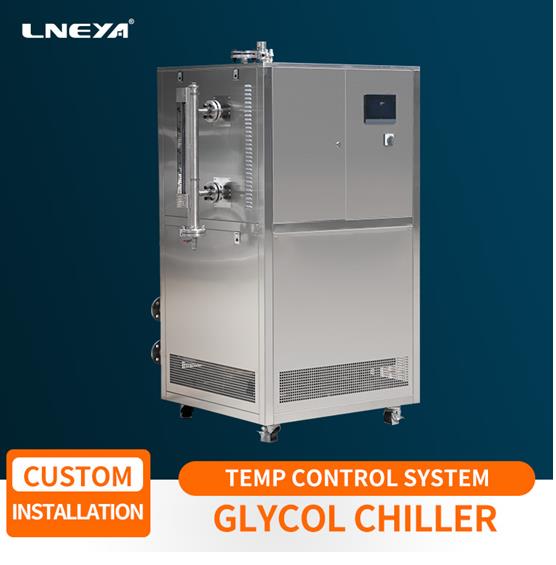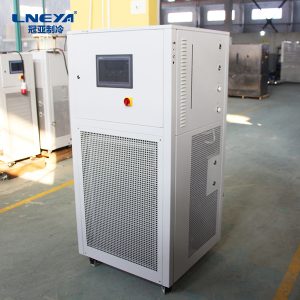Descrizione della temperatura del refrigeratore di glicole
For users and friends, it is necessary to
have a deep understanding of glycol chillers before use. It is recommended to
know the temperature in various equipment such as refrigeration system,
evaporating temperature, condensing temperature, etc.
If the refrigeration system of the glycol
chiller can operate safely, three points need to be paid attention to:
1. The pressure of the refrigerant in the
refrigeration system needs to be observed at any time to avoid abnormal high
pressure, so as to avoid rupture;
2. The phenomenon of damp heat stroke and
liquid shock shall not occur and occur, so as to avoid damage;
3. Pay attention to timely maintenance of
each component, so as to avoid component defects and cause malfunction of the
glycol chiller.
The evaporation temperature of a glycol
chiller refers to the temperature at which the refrigerant in the evaporator
inside the unit boils and vaporizes under a fixed pressure. The condensing
temperature is the gas refrigerant in the condenser of the unit, and the
temperature at which it condenses into a liquid under a certain pressure is
called the condensing temperature. The recooling (or subcooling) temperature
refers to the temperature at which the condensed liquid refrigerant is cooled
to below the condensing temperature under the condensing pressure, which is
called the recooling temperature (or subcooling temperature). The intermediate
temperature of the glycol chiller refers to the two-stage compression system.
The saturation temperature of the refrigerant in the intercooler at the
intermediate pressure is called the intermediate temperature.
In fact, the temperature description of the
glycol chiller is quite a lot. So how to detect the suction temperature and
discharge temperature of the glycol chiller compressor after knowing these
temperatures? The suction temperature of the compressor can be measured from
the thermometer in front of the suction valve of the compressor. The suction
temperature is generally higher than the evaporating temperature, and the difference
depends on the length of the return pipe and the insulation of the pipe.
Generally, it should be 5-10 higher than the evaporating temperature. The
superheat can be adjusted by changing the liquid supply; The air temperature
can be measured from a thermometer on the exhaust pipe. The exhaust temperature
of a glycol chiller is directly proportional to the (suction and exhaust)
pressure ratio and the suction temperature. The higher the suction superheat
and the higher the pressure ratio, the higher the exhaust temperature,
otherwise the opposite. Generally, the exhaust pressure is slightly higher than
the condensing pressure.
Therefore, in order to better run the
glycol chiller, users still need to understand it. If you don’t
understand, you can contact us at sales@cnzlh.com. LNEYA is a chiller
manufacturer.
Raccomandazioni correlate
-
Chip di controllo del riscaldamento a bassa temperatura e altri metodi di rilevamento
1725Con la ricerca e lo sviluppo della tecnologia dei chip, anche la tecnologia di rilevamento dei chip sta maturando. La tecnologia dei chip di controllo del riscaldamento a bassa temperatura di LNEYA viene applicata al rilevamento dei chip. Oltre a questo tipo di tecnologia di rilevamento, ci sono altri...
Visualizza dettagli -
Description of high and low temperature circulation tank refrigeration process
2002In the process of using high and low temperature circulating tanks, there may be some minor problems due to improper use, and there may be problems in the refrigeration process of Wuxi Guanya high and low temperature circulating tanks, and then we...
Visualizza dettagli -
What are the functions of the chip production high and low temperature aging test chamber?
1533At present, the chip wafer production industry is facing unprecedented challenges and changes. In addition to technology, output has always been a concern in the industry. We all know that the birth of a chip requires many processes, and a good ch...
Visualizza dettagli -
Several Common Troubleshooting Methods for Ultra-low Temperature Freezer in Laboratories
16311. After power supply is switched on, the air switch of the main power supply is automatically disconnected.Elimination method: Check whether the compressor of refrigeration system is damaged or not, and replace the parts if damaged. After replaci...
Visualizza dettagli
 Refrigeratori industriali LNEYA Produttore Fornitore
Refrigeratori industriali LNEYA Produttore Fornitore














